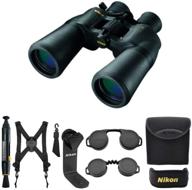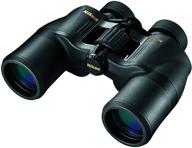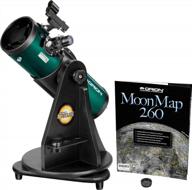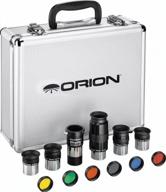
Review on 📸 Capturing Crisp Planetary Images: Celestron NexImage 10MP Solar System Imager (93708) by Seth Singh

The NexImage 5 camera requires TLC for reliable operation
The Celestron NexImage 5 camera is a modified webcam specifically designed for capturing objects in the solar system. That means sun, moon and larger/nearer planets. In fact, it's not designed to capture very faint deep-sky objects. So, since the hardware can meet that requirement, it does it quite well. Whatever effort Celestron put into developing this product, it was all about the hardware. The software on the CD that came with the camera works but is out of date. It hasn't been updated in years. Luckily, the only software that needs to be installed from the disc is the camera drivers on the CD. The drivers are also available for update on the Celestron website and I would definitely recommend getting a driver update. I've heard that the camera drivers only work reliably with Intel processors and may have issues with an AMD-based system. I didn't dare to test this as I had an affordable Intel i5 based laptop. The supplied ICAP and Registax 6 software on the CD can be used but ignored. I ended up using FireCapture to capture photos from my camera and AutoStakkert! 2 for digital imaging requirements. Both software packages are freely available on the Internet and are currently supported by their creators. Both programs require some learning curve, but I find them well worth the effort to master, despite the lack of written documentation available. Both have Yahoo groups to discuss using each program, and I used the discussion groups to ask questions and get relevant answers from the active user community. My other issue is with the NexImage 5 camera, though not with the camera sensor itself or the electronics attached to it to make it work. Electronics are fine. The only other real issue I had was with the optical window in front of the sensor. This window has an anti-reflective coating. I suspect that this also reduces the infrared sensitivity of the camera. (Although I can't prove it.) The cover works as intended. My problem arose when I was testing a system—a telescope, a camera, and a laptop—with a glass solar filter for photographing the sun. After the camera overheated when used outdoors in over 100 degrees of weather, streaks formed on this window cover that were clearly visible to the eye. This affected the images I took, particularly for the sun and moon. Now, while I'll admit that heating the chamber was a bad idea, I don't think it should have affected the window coating. The sensor recovered normally. And since I'm stubborn, instead of sending the camera back to Celestron for repair, I just decided to fix the problem myself. (I have some professional experience cleaning optics.) This adventure took a lot longer than it should have. I ended up having to use rubbing alcohol to peel off the fringes and part of the window covering. Of course, getting rid of all the properties of the dust I put in wasn't easy either. For this reason, most users should not attempt to open the camera to clean the optics themselves. When the camera's pixels are in the micron range, your eye simply can't see the dust particles that can settle there and spoil the image. It took me two weeks to finish this mess. So remember that you need to pay attention to the environmental factors that the camera is exposed to, especially heat. Moisture doesn't hurt either. If you keep this in mind and use the programs currently available on the Internet to launch the camera, you will succeed. However, don't be discouraged if you choose something else.
- Camera & Photo
- No power
New products
Comments (0)
Top products in 🔭 Binoculars & Scopes

Nikon ACULON 10 22X50 Binoculars Harness

12 Review

👀 Nikon ACULON A211 8x42 Binoculars: High Quality Optics for Exceptional Viewing

15 Review

Discover The Wonders Of The Universe With Orion StarBlast 4.5 Telescope In Teal Color

14 Review

Enhance Your Stargazing Experience With Orion'S Premium Telescope Accessory Kit (1.25-Inch, Silver)

21 Review






